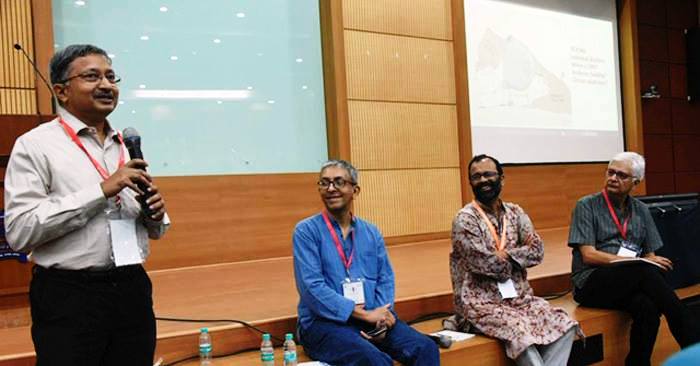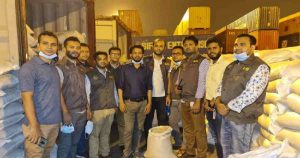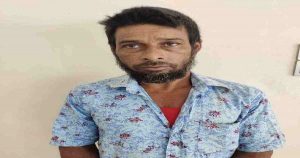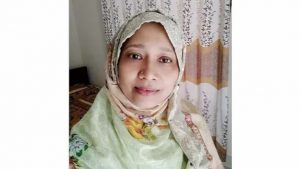Nalaka Gunawardene
Starting in 2008, the Indian government has been convening a global event platform called World Congress on Disaster Management to bring together researchers, policy makers and practitioners from around the world to discuss challenges of disaster risk reduction (DRR). The 4th in the series was held in Mumbai from 29 Jan to 1 Feb 2019, hosted by the State Government of Maharashtra, Indian Institute of Technology Bombay (IIT-B) and Tata Institute of Social Sciences (TISS).
One of the special events was a 90-minute session themed ‘Media and Disaster Management’, which was meant to discuss the role of media as enabler and partner of both government and community to improve information on disaster risk management. I was invited to be a speaker at this session, along with fellow science writers and journalists – Atul Deulgaonkar based in Latur in Maharashtra, S. Gopi Warrier from Chennai, Kunda Dixit from Kathmandu and Mostafa Kamal Majumder from Dhaka, Bangladesh.
Unfortunately, Mostafa couldn’t make it, and Kalpana Sharma from Mumbai itself – who could have been such a valuable addition to the session – was out of town.
So the four of us (all males making up a ‘manel’ – sorry!) engaged our diverse and international audience on
Here are a few images
There is a local media story here: https://www.maharashtratoday.co.in/fourth-global-disaster-…/
Atul Deulgaonkar opined that the role of the media is significant to reduce the financial and human loss during any disaster and the media should strive to enhance the fortitude of the society
He was speaking at the symposium titled ” Media and Disaster Management ” organized at the Fourth Global Disaster Management Conference being held at Indian Institute of Technology Powai. Shri Nalaka Gunavardhane from Sri Lanka, Shri Pundamani Dixit from Nepal and Shri S Gopikrishna Warier from Kerala participated in the symposium.
Deulgaonkar stated that floods, Tsunami, Cyclone, earthquake are the natural disasters that strike India, Nepal, Bhutan, Sri Lanka, Indonesia, and Bangladesh which claim thousands of lives. The last man in the society should be educated about the primary measures to be taken, should such natural or manmade disasters strike. It is important to reduce the risk associated with the disaster. A program should be drafted right down to the Village Panchayat Level and the social media can play a significant role here. Studies and research are going on at the global level for redressal of the disasters. Brainstorming is occurring with respect to the education and training that should be imparted. The citizens should take benefit of the advanced technology and construct earthquake-proof houses. Stating the danger of
Warier stated that the role of the conventional and modern media proves significant during the disaster period. The media should work with the Government and the society for accurate coverage of the disaster. Stating that the media discharged a responsible role during the Kerala floods he informed that some newspapers deployed their representatives and photographers in different areas for covering the floods. All of them were present in the flood-affected areas until the floods receded. They ensured that the accurate information about the floods reached the global level through WhatsApp, facebook, twitter and other social media. This helped in aid coming from all quarters. many states also offered assistance. Many social organizations also helped Kerala state to recover itself from the floods.
Gunawardhane discussed the various disasters that struck Sri Lanka. The information attains credibility if the media place the authorized reports before the society. Media are also, after all, a part of society and they cannot remain in a vacuum. Exact stating of the kind of assistance at various locations during the disaster period ensures proper assistance at proper places.
Dixit from Nepal informed that ice lakes have formed at the foothills of the Himalayas and expressed concern that an earthquake strike can cause a huge financial and human loss in India, Nepal and Bangladesh. He further stated that the media should realistically and factually cover the news during the disaster period. There should not be a competition for any live telecast of an accident. Truth should be told to the people. Stating that it was the responsibility of the media not to create confusion and terror amongst the people due to any news or photographs he also discussed the new problems arising due to the global warming in South Asia subcontinent. .
After the symposium, the students from Jammu and Kashmir, Bhutan, Tamilnadu, Andhra Pradesh, Uttarakhand, Uttar Pradesh, Kerala, Sri Lanka, Thailand, Nepal, Bangladesh, Maharashtra, Karnataka, Gujarat posed questions to the experts and discussed various topics with them. The students from the Journalism faculty and correspondents from the media houses were present in large numbers for the symposium. – Courtesy – Nalaka Gunawardene’s Facebook post




